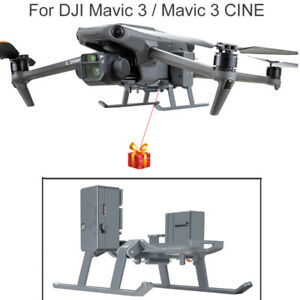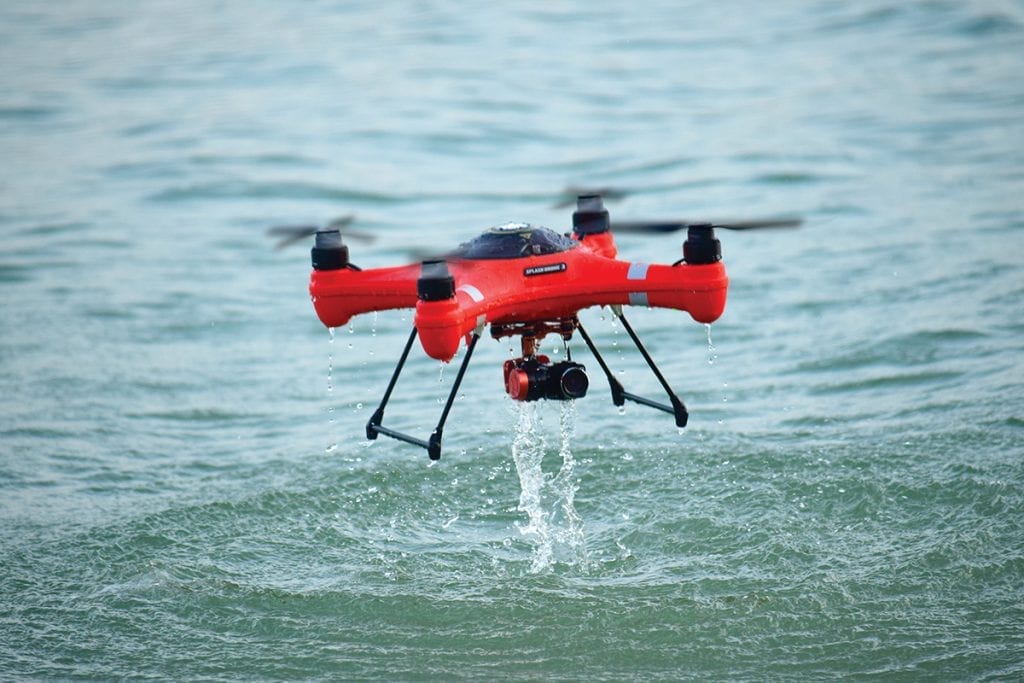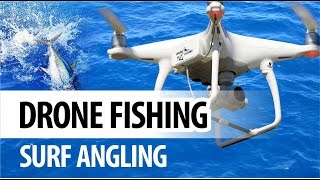
In this article, we'll look at the basics of a drone fishing rig. We will also discuss what to look out for when selecting your drone, battery life and payload. Then, we'll discuss some ways you can get the most from your drone. Continue reading for more tricks and tips. You'll soon own the drone you desire! Let's start!...and maybe catch a few fish!
Basic drone fishing rig
You will need a good set hooks to get started with drone fishing. The fishing line should be doubled and should be mono or braid. A Cat's Paw Loop or Uni knot should be tied to the fishing line. You will also need a sinker (2-8 oz) and hooks (to attach to each section of the backbone). The final step is to attach the lead loop and end loop of your drone using a snap swivel.
You can make a fishing drone in many different ways. Attaching a hook and spinning the drone until the line releases is a basic way. A dropper to keep your fishing line under the drone is another option. Droppers are a way to keep the main line from getting caught up in propellers. Accessories such as docks and batteries can be added to fishing drones.
You will need additional equipment once you have bought the basic drone fishing gear. A fishing line that is approximately 700m long, as well as a bait-dropping apparatus are required. These are optional, but they will make drone fishing more fun. A drone will give you a clearer look of your surroundings so you can spot fish better.

Payload for drone fishing system
It is important to understand the safety precautions you must take if you intend to catch fish from a drone. You should never fly your drone in strong winds or rain. Here are some steps:
First, ensure that the drone has enough weight to support its weight. If you load it with heavy lures and braided line, it will not be stable. Also, if you're fishing at a seaside location, the wind may blow the drone off its course. It is also important that you check your local laws and regulations, as some may not allow the use of drones for fishing. After you have decided to go fishing with your drone, it is important to make sure that the drone has enough carrying capacity.
Next, you need to decide which accessories will be needed to mount your drone. To minimize the problems of weight distribution, it's a good rule to use a rigging that has a central connection point. Motor struts or landing gear and the legs of the drone are all good options for attaching. Payloads attached to the camera and/or gimbal can cause damage. You can tie a fishing line running from one end of the camera to the opposite. To prevent it from slipping out, tape can be used to secure the fishing line.
Battery life for drone fishing rig
Be sure to check the batteries, and other gear before you go out fishing with your drone. This will allow you and your drone to have a longer battery life. You may be able to charge your drones using solar panels or batteries from your car. It is a good idea to start with fully charged batteries. This will ensure your drone is ready for flight as soon as your reach your fishing spot.

It is also important to take into account the drone’s flight time. There are some models that have longer flight time than others. However, a drone with a flight time of twenty-two minutes is sufficient to get the job done. This is a great option if you plan to spend hours on the ocean with your drone. A drone that has limited endurance is likely to be unusable and renders it impossible to catch fish.
After you have setup your fishing rig, attach the fishing line clip to either the legs or the motor struts. Attach the bait and line to the drone. Before you start to fly the drone, lock the reel and then unlock it when you are ready to drop the bait. As the drone drops the bait into the water, the tension will increase. It is important to charge your battery before each use or the drone may stop working properly.
FAQ
Where are Drones Banned?
The FAA bans drones flying in restricted areas such as airports, stadiums or sporting events, nuclear power stations, hospitals, prisons, and other sensitive areas. They allow them to fly at nights using GPS technology.
Can my drone be flown in my local park?
Yes, drones can be flown in parks around the world. Some countries prohibit the use of drones in parks. This is because of safety concerns. Our list contains places where drones are legal to fly for enjoyment.
What are the rules and regulations for drones operation?
The FAA will require you to register your drone. You will need to submit information about your drone including its weight and size as well as operating frequency. You will also need to get an FAA identification number.
Is it possible to fly a drone at high altitudes without a license?
The FAA has no limits on the maximum height a drone can fly. The FAA does require you to register unmanned aircraft systems (UAS), which include the registration number of your model, weight and size, serial numbers, manufacturer's names, date manufactured and other information.
What's the difference between quadcopters and hexacopters?
A quadcopter is a four-rotor helicopter that flies like a traditional helicopter. It has four rotors that rotate independently. A quadcopter has four rotors. The hexacopter has six. Hexacopters have more stability and maneuverability than quadcopters.
Statistics
- According to Indeed, a drone pilot gets paid $25.73 per hour on average in the US. (dronesgator.com)
- According to the multiple listing service (MLS), houses and apartments with drone photographs are up to 68 percent more likely to sell than those without pictures. (thedroneu.com)
- According to industry research from ZipRecruiter , there are 10 cities where the typical salary for a Drone Pilot job is above the national average. (dronesgator.com)
External Links
How To
How to Fly Drones for Beginners
A drone refers to a remote-controlled aircraft designed for aerial photography, surveillance and scientific research. Drones are a technology that has been around since World War II. DJI's Phantom series quadcopters were first commercially available in 2010. Since then, there have been many different types of drones available, from beginner-friendly models like the Parrot AR Drone 2.0 to professional-grade multi-rotor craft like the DJI Mavic Pro.
You can fly a drone in many different ways, including:
-
Remote control: This uses a remote control device that attaches to your hand and allows you control the drone along its flight path. There are two types of controllers available: joysticks and on/off switches.
-
Manual Control – This allows remote operation of the drone via GPS coordinates using a smartphone application. You must keep track of the location where you want the drone to go and follow the instructions from the app.
-
Autonomous Flight - This method involves leaving the piloting duties to the drone itself. It is basically flying autonomously and without human intervention. It must have a builtin camera, sensors capable of taking images and data to enable autonomous flight.
-
Triggered Flying - This method works in the same way as manual control. However, the pilot has to manually set up a route for the drone and it follows that route until reaching the endpoint. After the program is complete, the drone automatically returns to the ground.
-
Landing Gear – Some drones are equipped with landing gear, which allows them to safely land if they lose power during flight.
-
Goggles - Pilots may wear goggles to shield themselves from flying debris.
-
Camera – Some drones have cameras, which allow you to take photos or videos from up high.
-
Obstacles: Some drones are equipped with obstacle avoidance systems to prevent them from hitting obstacles.
-
Speed – Some drones can reach speeds in excess of 40 mph.
-
Battery Life – Most drones will last 20 minutes to three hours depending on how powerful they are.
-
Some drones have a range of up to 30 miles, depending on their model.
-
Power source - Some drones require an external power source; others work off internal batteries.
-
Weight - Some drones can be as light as 1 pound while others can reach 4 pounds.
-
Size - Drones come in many sizes, from small gadgets that fit in one's hands to large craft that weigh more than 50 lbs.
-
Price - High-end drones can go for thousands of dollars, while low-cost models start at $100.